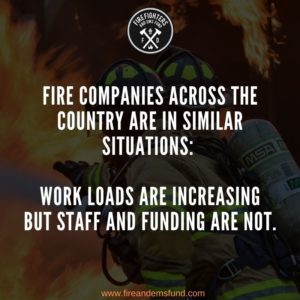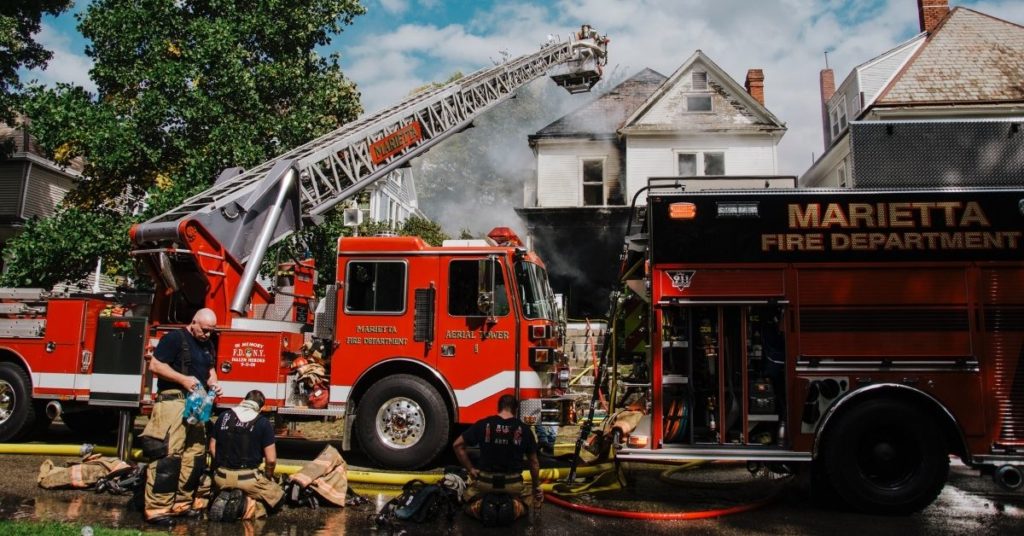In November 2021, the Fire Chief of Wausau County, Wisconsin, Bob Bartek went in front of city officials to ring the alarm bells. “The public needs to be aware of the weaknesses inside the Wausau Fire Department,” he said. In 2020, the department received 6,318 calls, compared to 2,138 in 1970. But over that same period of time, the department gained only 2 staff.
Fire companies across the country are in similar situations: Work loads are increasing but staff and funding are not. From Wisconsin to San Diego to Virginia, there are not enough firefighters. This leaves communities vulnerable to not just fires but also other kinds of emergencies. Fire departments have come to serve as crucial EMS first responders. According to the Federal Emergency Management Agency (FEMA), cross-trained firefighters make up 38 percent of EMS first responders in the U.S.
The U.S. Forest Service – who is responsible for managing wildfires on federal lands, which comprise about 8.5% of the total land area of the U.S – is also warning of dangerously low numbers of firefighters in their ranks. This is deeply worrying. Climate change has turned “fire season” into “fire years,” said Forest Service Chief Randy Moore in a testimony to the House in the fall. Last year, California had its worst fire season in recorded history. More firefighters are needed not just to contain the fires but to undertake preventative measures like trimming undergrowth that can mitigate the severity of the blazes once they start.
Volunteer Shortage
Fire departments and EMS services are the only common public services that depend upon volunteers, and there are fewer volunteers than in the past. In Los Angeles, the population has grown 12% in the last 40 years, yet there are fewer volunteer firefighters today than there were in 1989. There were over 300,000 volunteers in Pennsylvania in the 1970s compared to just 30,000 to 35,000 today.
Fire chiefs have speculated on why fewer people are volunteering. They cite, “shifting family dynamics and work responsibilities.” More people seem to commute in from elsewhere, so they are less connected to where they work and live, and they have less time. People have simply become busy.

The problem of understaffed departments is exacerbating itself. With smaller departments, firefighters are asked to work more, which leads to burnout. Covid, by placing even more staff members on sick leave, has only made the problem worse.
Staffing Strategies
In October 2021, the Wisconsin Policy Forum released a report entitled, “In Need of Resuscitation?” in which they detailed the challenges facing Wisconsin fire and EMS departments. They concluded that since fire companies can no longer rely upon volunteers, they need to increase compensation to attract more firefighters. Increased salaries are costly, and fire companies are already struggling to secure funds, but there are other ways that companies can improve compensation. They can fund education for those who want to become firefighters and expand access to benefits like healthcare.
The report also advocates for increasing Medicaid reimbursement for ambulance transports to 100% of the Medicare rate, which would boost fire and EMS department revenues. To cut costs, multiple departments can consolidate into one.
Fire departments have selflessly served our communities for so long, and they just want to continue to do so. But they are struggling, and this is not easy to admit. As Chief Bartek of Wausau County said, “It’s an incredibly humbling thing to show our weaknesses inside our department, but it’s time that it needs to be brought forward and it’s the right time to begin conversations.”
Firefighters have answered our calls time and again. Now they are calling on us to help them. How will we answer?
Image Credit: Photo by Courtney Wentz on Unsplash








